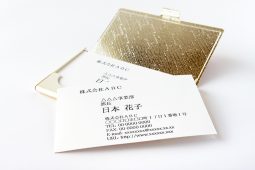Unlike many western countries I’m familiar with, the Japanese CV format is almost totally standardized. Naturally, some companies (particularly tech ones) may ask for additional or alternative forms more like the CV or resume you’re familiar with, but understanding the Japanese one is going to be essential for looking for work here. There is also a more complete work history form, 職務経歴書 shokumukeirekisho, that is better suited to those with longer, more complex work history, but let’s stick to the basics for now.
Points to Consider
The basic form is pretty straightforward, but there are a few points that many non-Japanese jobhunters find confusing or even upsetting. Differences that stand out include:
- A photo is required. The form at the includes a square to paste an ID photo. Countries like the US actively prohibit something like this, but this is not the case in Japan. Know that you may be rejected for many job opportunities if you don’t do this.
- You will be required to list extremely detailed educational information, including your high school history, as well as both entry and exit dates.
- Personal information like gender/sex is expected, but attitudes to this may be changing. However, for the time being, be ready to deal with this issue in filling out forms and going to interviews.
It’s important to remember that Japan has developed its own job culture and if you want to participate, you have to adapt to the current system.
Expected Information
The numbers below correspond to the 履歴書 rirekisho template attached. There are minor variations in different forms, but the information is not going to vary much. Here you can download a blank Japanese CV.
- ①年月日現在 (Nengappi Genzai) Current date — Use the standard Japanese date format YY-MM-DD (use the Traditional calendar, where 2020 is Reiwa 02).
- ② 氏名 (Shimei) Name — You should use the name as it is on your official ID. To make it clearer, perhaps consider putting 姓: to indicate your family name and 名; to indicate your given name.
- ③印 (In) Stamp — If you have a hanko, stamp it here
- ④ 写真 (Shashin) Photo. Paste an ID photo here. You can get it taken at any of those official photo booths, which are usually found at electronics shops or camera stores. Use the official size as listed on the form, and make sure you look businesslike when you get it taken.
- ⑤ 生年月日 (Seinengappi) Birth date — Use the standard Japanese format of YYYY — MM — DD, and enter it in the Showa/Heisei format if you know it. There is a section in parentheses asking for your current age in years. The section 男・女 refers to gender. See point 4 above about this.
- ⑥ 現住所 (Genjusho) Current address — Where you currently live. If you want to be contacted at another address, see (8). The section above (ふりがな) is for the hiragana reading of your address.
- ⑦ 電話 (Denwa) Phone number — if you live abroad, include your country code preceded by a +
- ⑧ 連絡先 (Renrakusaki) Contact — This is an alternate contact section. If, for example, you have a second address, or a local contact the company can find you through, list it here.
- ⑨ 電話 (Denwa) Phone number — This is the additional contact for the above Renrakusaki.It might be a cellphone address.
- ⑩ 学歴 (Gakureki) Educational history — This is a very important section. Japanese companies expect details on your whole education, from elementary school on. You should also include the date of entry and graduation/exit for high school and university, etc. On this form, it is also combined with
- ⑪ 職歴 (Shokureki) Employment history — Again, include dates of entry and leaving for every employer, and include the reason you left. (The columns at the left are 年 year and 月 month.
- ⑫ 免許・資格 (Menkyo/Shikaku) Licenses / certificates — Even if it seems irrelevant, you should include every license or certificate you have, including your driver’s license, as well as the date you received it.
- ⑬ 志望の動機特技、好きな学科など (Ambitions, special skills, favorite field, etc.) — This is a chance to reveal some personal information that might help show how you would fit a given position. Make sure you keep it fairly relevant.
- ⑭ 通勤時間 (Tsukan Jikan) Commute time — If you already live in Japan, fill this in on a per-job basis. If you don’t, leave this blank.
- ⑮扶養家族数 (Fuyo Kazokusu) Dependents — This doesn’t include a spouse (see 16).
- ⑯ 配偶者 (Haigusha) Spouse — 有 means you have one, 無 means you don’t.
- ⑰ 配偶者の扶養義務 (Haigusha no Huyogimu) Support of spouse — 有 means your spouse depends on you for an income, 無 means they don’t.
- ⑱ 本人希望記入欄 (Honnin Kibou Kinryuran) Requests to Company — This is where you put your requested salary, benefits, etc.

Don’t forget about the cover letter.









